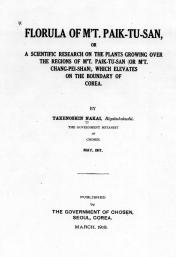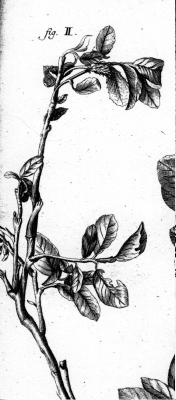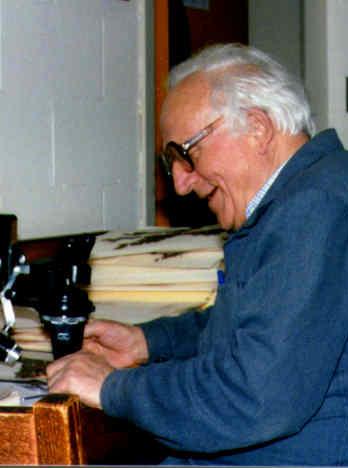Chosenia, a showy, large tree representing a separate genus of the family Salicaceae, has been long known, beloved, and used by the nations of East Siberia and the Far East: the Koreans, Japanese, Chinese, Russians, Yakuts, and others. Being so famous in the East, the tree has been, however, relatively recently recognized by the western civilization. The process of this recognition was rather uneasy. Many times, it reached a stalemate and had to be initialized over and over again.
The credit of recognizing Chosenia as a genus was taken by the Japanese botanist Takenoshin Nakai. The amazing fact is that he described Chosenia from Korea, whereas Chosenia is indeed distributed on two of the major islands of the Japanese Archipelago. In 1907, after victorious Sino-Japanese and Russo-Japanese wars, Japan annexed Korea. Korea became one of Japanese provinces in 1910 (and remained Japanese until the end of World War II). T. Nakai, a renowned Japanese scientist, was then appointed the government botanist of Korea.
Nakai found himself in a country completely unknown to the scientific world and endeavored in organizing a long and difficult expedition around mountainous regions studying the rich yet unknown forests. He started the publication of Korean "Flora" already in 1911 (1). In it, however, he did not mention any unusual Salicaceae (1: 215). Later this gap was explained. As the tree had the bluish bloom on its young branches, he mistook it for a familiar willow exhibiting the same kind of bloom, Salix acutifolia, thus repeating the mistake of the Russian botanist Vladimir Komarov, who had also listed the future Chosenia under the name "Salix acutifolia Willd." in his "Flora of Mandshuria" of 1903 (2: 23). Indeed, Nakai encountered the tree a few times. At first he was taking it for some species of Salix familiar to him. By 1918, he realized that the European S. acutifolia could not grow naturally in Korea and attempted to attribute the findings to S. rorida, the Far Eastern counterpart of the European willow (3: 169). It was not until May of 1917 that Nakai was able to study samples with male catkins collected by "a staff of the Bureau of Forestry". At that point he started to change his mind about the strange willow, thus approaching the conclusion that he was dealing with something new, probably even a new section of Salix.
He described the impressive tree as a new Salix: S. splendida Nakai in the article published in 1918 in Tokyo Botanical Magazine (4: 215-216). It took Nakai two more years to finally find the female flowering specimens and then reach the stunning conclusion that the wind-pollinated tree with its fully drooping catkins, reduced nectaries, and anthers connate to bracts could not be a mere willow and thus represented a new genus of Salicaceae. He came up with another article in the same Botanical Magazine in 1920 (5). There, he proudly wrote: "Since the Linnaean period up to this date we have known of no other genera than Salix and Populus in the family of Salicaceae. The present genus, which I am introducing, is a new addition to the family. It is a big, magnificent tree growing along the river sides in North Korea. The trunks become one or one and a half meter in diameter and the height of the tree becomes more than thirty meters. In appearance it is in every respect a Salix. ... The name Chosenia is derived from Chosen or Korea. It is distributed all over those districts where the famous Korean forest enriches the country."
Indeed, the very official title of Nakai was "the government botanist of Chosen". "Chosen" was the old name of Korea then still in use by the Japanese. "Choson" was the name of the ancient kingdom that was founded by the Chinese in the North of the peninsula perhaps as early as 12th century B.C. and existed until 1231 A.D., when it was overrun by the Mongols. Another kingdom of the same name, ruled by Li dynasty, existed there from 1392 up until 1910 (6: 622). In North Korea, there is a city that still bears a name of Chosan.

|
Title page of one of the monographs by T. Nakai, "the government botanist of Chosen" |
As for the specific epithet for the newly described tree, it remained the same: "splendida", which produced a name Chosenia splendida Nakai. The short article of 1920 by T. Nakai brought about a storm in the botanical science. V. Komarov (who was probably a better administrator than botanist and later became President of the Russian Academy of Sciences) had to cope with the fact that by making a blunder he had missed an important discovery when studying the flora of the Far East. In 1927 (7: 276), Komarov confessed: "There is no need to say how stunning is the finding of a new genus in a family that is so commonly known and so scarce in terms of genera ... When visiting the Herbarium of the Tokyo Botanic Garden, I first of all asked to show me Chosenia. Imagine my surprise, when I was shown a specimen that I had collected myself on June 7, 1897 near the City of Musang in Korea. It was a large branch, abundantly decorated with fruit catkins, which I had taken for Salix acutifolia Willd. being misled mostly by the thick bluish bloom on its surface. This was a bad mistake. However, one cannot call Chosenia a recent discovery: it had been long known, but only recently recognized as a distinct genus."
Komarov then starts another round of the marathon for the priority over the name of Chosenia by pointing to the fact that the specific epithet employed by Nakai was not a legitimate one. He lists names under which this tree had been previously known in the Russian scientific literature. In 1854 N. Turczaninow (8a: 369) described similar trees from Transbaicalia as Salix macrolepis (emphasizing the fact that its bark exfoliates forming large scales). Soon after that, in 1856, the tree was described for the second time in the survey of plants from the Uda River collected during Middendorff's Expedition (9: 77), this time as Salix bracteosa Turcz. ex Trautv. et Mey., again referring to the bracts or scales formed on the surface of the bark. In 1867 and 1883 (10a, 10b) A. Budishchev named it Salix pyramidalis (referring to the shape of the crown). Komarov then reminds that both the Russian "Flora of Sakhalin" by Fr. Schmidt (11) and the Japanese "Flora of Saghalien" by K. Miyabe & T. Miyake (12) employed the name "Salix macrolepis Turcz." Komarov states that he compared the samples from Korea with those collected by Turczaninow in Transbaicalia and found them completely identical. He finally makes the following pleasant conclusion: "The correct name for this magnificent tree should be Chosenia macrolepis (Turcz.) Komarov."
It was not only Komarov who put the doubtful epithet of Chosenia under scrutiny. Of course, Nakai himself soon realized that he had to be more careful when choosing a name for his finding. By 1924, he found out that the American plant hunter in Asia F. Meyer had described the same plant in 1916 (13: 99) under the name of Salix eucalyptoides (since its unusual exfoliating bark reminded him of the Eucalyptus). Nakai decided to rename his Chosenia accordingly and published yet another article, this time in the Journal of the Arnold Arboretum (14: 72-73), with the description of the plant, which he now named Chosenia eucalyptoides (F. N. Meyer) Nakai. Only in 1930 (15: 59-63) Nakai finally identified his plant with those described by the Russians in Siberia back in the 19th century. However, he rejected the combination proposed by Komarov and used the alternative epithet, "bracteosa Turcz." also mentioned by Komarov. That's how Chosenia acquired yet another name: Chosenia bracteosa (Turcz.) Nakai.
As a result of all the hustling around Chosenia, the entire world became confused about its identity. With the abundance of names, some even believed that there were more than one species within the genus, which they considered to be "still poorly known." In the United States, E. H. Wilson (16: 36) launched yet another version of Chosenia name: Salix nobilis Nakai 1918. Nakai, however, refused to take the authority for yet another ridiculous name and repeatedly stated that this name was a mistake (5, 14). In Sargent's "Plantae Wilsonianae" of 1916 (13), Chosenia was presented as "Salix eucalyptoides Meyer", thus adding to Chosenia mystery in the New World.
The two competing names of Chosenia, C. macrolepis (Turcz.) Komarov and C. bracteosa (Turcz.) Nakai, were intermittently in use, depending upon writers' preferences, until 1957, when A. K. Skvortsov, the Russian authority on willows and other amentiferous plants, proved that both of them were not priority names (17). While working at the Herbarium of the Botanical Institute in St. Petersburg, Skvortsov had discovered an authentic specimen of chosenia described by P. Pallas, the author of the classical "Flora Rossica" (18). The specimen had three labels. The first one pointed to the place of collection: "Circa Baical". The second bore Pallas' initial identification of the plant using the "Flora Sibirica" by J. G. Gmelin (19). The third one, also bearing Pallas' handwriting, said: "Salix myricaefolia Nov."; however, a part of the epithet ('myricae-") appeared to be crossed out and "arbuti-" superseded the crossed out part. That made the epithet "arbutifolia". The original Pallas' description of Salix arbutifolia was published in "Flora Rossica" as early as 1788 (18: 79). Skvortsov emphasized that the description fully matched the sample discovered in the herbarium. That means that the very first description of Chosenia actually was published more than 200 years ago and belonged to P. Pallas. Skvortsov then tried to understand why the plant mentioned in the classic botanical work remained misunderstood for a few centuries. Skvortsov provided a keen explanation for that. According to him, that was all Pallas' own fault that Budishchev, Turczaninow, Trautvetter, Schmidt, Komarov, Nakai, Miyabe & Miyake, Meyer, Wilson, and others had to re-discover Chosenia again and again. First of all, he mistakenly identified his Salix arbutifolia with a willow described in Gmelin's "Flora" (19: 160) and in his description made reference to an illustration in that flora that had nothing in common with Chosenia.
 |
 |
Peter Pallas (1741-1811), the author of the famous 'Flora Rossica', where he described 'Salix arbutifolia' in 1788. A willow ('Salix pumila') in Gmelin's 'Flora Sibirica', with which Pallas mistakenly identified his 'Salix arbutifolia'. |
But even more misleading were Pallas' notes on natural habitats of Salix arbutifolia. Pallas stated that it was distributed across Siberian barren heights! Skvortsov emphasized the fact that during his famous travel across Siberia, Pallas had failed to even notice many willow species that were quite distinct and easy to recognize. Apparently, he never or rarely took the trouble of collecting willows and in his treatments he was relying on samples collected for him by others. This must be as well true for the sample of Chosenia, which he most likely received from others with the only laconic note: "near the Baical". The Chosenia sample had been likely forwarded via a few caddies before it reached Pallas, so that the accompanying information could be easily confused or lost. As a result, Pallas came up with the habitat description of his Salix arbutifolia that was almost entirely taken from the description of Gmelin's willow "Salix pumila" (19: 160), with which Pallas mistakenly identified his plant. As the later authors did not see Pallas' Herbarium, they could never recognize Chosenia in his description and treated his Salix arbutifolia as a synonym of S. myrsinites (as did Turczaninow and Ledebour) or S. fuscescens (as did Hultén and Floderus).
Chosenia has long been known in different countries, however, it was only in 1957 (17) that it received its correct name and the discussions concerning what would be the appropriate name for this amazing tree came to a full stop. The name that has been finally accepted everywhere including Japan, Korea, and China is Chosenia arbutifolia (Pallas) A. K. Skvortsov.

|
A. K. Skvortsov at the Harvard University Herbaria, working on the willow section of the 'Flora of China' project. Photo A. Zinovjev (1997) |
REFERENCES
(1) Nakai T. 1911. Salicaceae. In: Flora Koreana II. — J. Coll. Sc. Imp. Univ. Tokyo 31: 211-215.
(2) Komarov V. L. 1903. Salicaceae. In: Fl. Mansh. II, 1. — Acta Hort. Petrop. 22 (1): 14-38. In Russian.
(3) Nakai T. 1918a. Salicaceae. In: Report on the Vegetation of Diamond Mountains, Corea, March 1917: 168-169. Seoul, Corea, Government of Chosen.
(4) Nakai T. 1918b. Salicaceae. In: Notulae ad Plantas Japoniae et Koreae 18. — Bot. Mag. Tokyo 32: 215-248.
(5) Nakai T. 1920. Chosenia: a new genus of Salicaceae. — Bot. Mag. Tokyo 34: 66-69.
(6) Korea. In: Webster's New Geographic Dictionary 1977: 622. G. & C. Merriam Co., Piblishers. Springfield, MA.
(7) Komarov V. L. 1927. [The third genus of the family Salicaceae, Chosenia Nakai.] In: Iubileinyi sbornik, posvyashchennyi I. P. Borodinu. Editor A. Jaczewski: 275-281. Leningrad. In Russian.
(8a) Turczaninow N. S. 1854. Catal. Baikal. — Bull. Soc. Nat. Moscou XXVII: 369. In Russian (cit. after Komarov 1927).
(8b) Turczaninow N. S. 1856. Fl. Baical.-dahur. II (1): 98. Moscou Univ. Publ.
(9) Trautvetter E. R., C. A. Meyer 1856. Florula ochotensis phaenogama. In: A. T. Middendorff's Reise Sibir. I, 2: 1-133. St. Petersburg.
(10a) Budishchev A. F. 1867. [Description of the forests of the southern part of Maritime Province.]: 112, 169, 462. SPb. In Russian (cit. after Komarov, 1903).
(10b) Budischtschev (Budishchev) A. F. 1883. Descriptio silvarum gubernii Primorsk (rossice) 18: 35. (cit. after Komarov 1927).
(11) Schmidt Fr. 1869. Reisen im Amurlande und auf der Insel Sachalin. — Mem. Acad. Sci. SPb. ser. VII, 12 (1): 1-228.
(12) Miyabe K. & Miyake T. 1915. Flora of Saghalin (Salicaceae): 422-432. Publ.Govnt. of Saghalin.
(13) Meyer F. N. 1916. In: Sargent C. S. Pl. Wilson. III: 99. Harvard University Press.
(14) Nakai T. 1924. Some new and noteworthy ligneous plants of Eastern Asia. — J. Arn. Arb. 5: 72.
(15) Nakai T. 1930. Salicaceae. In: Fl. Sylv. Koreana XVIII: 59-63. Keijyo.
(16) Wilson E. H. 1919. A phytogeographical sketch of the ligneous flora of Korea. — J. Arn. Arb. 1.
(17) Skvortsov A. K. 1957. Commentationes de morphologia et systematica salicarum. IV. [On the correct species epithet for Chosenia.] — Bot. materialy Gerbariya Bot. in-ta AN SSSR 18: 42-47. In Russian.
(18) Pallas P. S. 1788. Fl. Rossica I, 2. Petropoli.
(19) Gmelin J. G. 1747. Fl. Sibirica I. Acad. Sci. Publ. SPb.